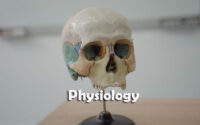General Surgery Questions and Answers for Practice and Preparation
The General Surgery Questions and Answers Papers are updated here. A vast number of applicants are browsing on the Internet for the General Surgery Questions and Answers Old Papers & Syllabus.

For those candidates, here we are providing the links for General Surgery Questions and Answers Model Papers & General Surgery Questions and Answers Sample Papers. Go through the below link to refer the General Surgery Questions and Answers Syllabus & Exam Pattern.
The candidates who want to refer the General Surgery Questions and Answers Previous Papers from the below links.
General Surgery Questions and Answers
1. The characteristic changes that follow a major operation or moderate to severe injury do not include the following:
A) Hypermetabolism.
B) Fever
C) Tachypnea
D) Hyperphagia.
2. Shock can best be defined as:
A) Hypotension.
B) Hypoperfusion of tissues.
C) Hypoxemia.
D) All of the above.
3. The most common hernia in females is:
A) Femoral hernia.
B) Direct inguinal hernia.
C) Indirect inguinal hernia.
D) Obturator hernia.
4. The following statement about peritonitis are all true except:
A) Peritonitis is defined as inflammation of the peritoneum.
B) Most surgical peritonitis is secondary to bacterial contamination.
C) Primary peritonitis has no documented source of contamination and is more common in adults than in children and in men than in women.
D) Tuberculosis peritonitis can present with or without ascites.
5. Acute appendicitis is most commonly associated with which of the following signs?
A) Temperature above 104° F.
B) Frequent loose stools.
C) Anorexia, abdominal pain, and right lower quadrant tenderness.
D) White blood cell count greater than 20,000 per cu. mm.
6. The best type of x-ray to locate free abdominal air is:
A) A postero-anterior view of the chest.
B) A flat and upright view of the abdomen.
C) Computed tomography (CT) of the abdomen.
D) A lateral decubitus x-ray, right side up.
7. The most commonly-used imaging method for diagnosis of acute cholecystitis is
A) CT of the abdomen.
B) Ultrasonography of the gallbladder.
C) Oral cholecystogram.
D) Radionuclide (HIDA) scan of the gallbladder.
8. The most common site of adenocarcinoma of the small intestine is the:
A) Duodenum.
B) jejunum.
C) Ileum.
D) None of the above
9. Meckel’s diverticulum most commonly presents as:
A) Gastrointestinal bleeding.
B) Obstruction.
C) Diverticulitis.
D) Intermittent abdominal pain.
10. The most common indication for operation in Crohn’s disease of the colon is:
A) Obstruction.
B) Chronic debility.
C) Bleeding.
D) Perforation.
11. The most common indication for surgery secondary to acute diverticulitis is:
A) Abscess.
B) Colonic obstruction.
C) Colovesical fistula.
D) Free perforation.
12. Sigmoid volvulus has been associated with each of the following except:
A) Chronic constipation and laxative abuse.
B) Chronic rectal prolapse.
C) Chronic traumatic paralysis.
D) Medical management of Parkinson’s disease.
13. Which of the following treatments most effectively preserves hepatic portal perfusion?
A) Distal splenorenal shunt.
B) Conventional splenorenal shunt.
C) Endoscopic sclerotherapy.
D) Side-to-side portacaval shunt.
14. The most precise diagnostic screening procedure for differentiating benign thyroid nodules from malignant ones is:
A) Thyroid ultrasonography.
B) Thyroid scintiscanl
C) Fine-needle-aspiration biopsy (FNAB).
D) Thyroid hormone suppression.
15. The preferred operation for initial management of a thyroid nodule that is considered suspicious for malignancy by FNAB is:
A) Excision.
B) Partial lobectomy.
C) Total lobectomy and isthmusectomy.
D) Total thyroidectomy.
16. All of the following are components of the MEN type 2B syndrome except:
A) Multiple neuromas on the lips, tongue, and oral mucosa.
B) Hyperparathyroidism.
C) MTC.
D) Pheochromocytoma.
17. Which of the following statements is/are true of the epidemiology and etiology of A.? Most melanoma?
A) Patients are diagnosed after age 60 years.
B) Skin colour has no association with risk of melanoma.
C) Sun exposure is the only risk factor for melanoma.
D) The per capita incidence of melanoma is highest in Australia.
18. A marker for the diagnosis of pancreatic cancer is:
A) CA 15-3
B) CA 19-9.
C) Carcinoembryonic antigen (CEA).
D) CYFRA 21-1.
19. Which serum markers are useful in the management of patients with testicular cancer?
A) hCG
B) AFP
C) CA 15-3.
D) Two of the above.
20. The most ominous sign or symptom of urinary system disease is:
A) Urinary frequency.
B) Pyurla.
C) Pneumaturia.
D) Hematuria.
| Practice Set | MCQs |
| Quiz | Questions and Answers |
21. A patient with acute urinary tract infection (UTI) usually presents with:
A) Chills and fever.
B) Flank pain.
C) Nausea and vomiting.
D) Painful urination.
22. Renal adenocarcinomas:
A) Are of transitional cell origin.
B) Usually are associated with anaemia.
C) Are difficult to diagnose.
D) Frequently are signalled by gross haematuria.
23. Patients who have undergone operations for benign prostatic hypertrophy or hyperplasia:
A) Require routine rectal examinations to detect the development of carcinoma of the prostate.
B) Do not need routine prostate examinations.
C) Have a lesser incidence of carcinoma of the prostate.
D) Have a greater incidence of carcinoma of the prostate.
24. To maximize fertility potential, orchidopexy for cryptorchidism should be done before:
A) Age 15 years.
B) Age 12 years.
C) Marriage.
D) Age 2 years.
25. The appropriate surgical treatment for suspected carcinoma of the testis is:
A) Transscrotal percutaneous biopsy.
B) Transscrotal open biopsy.
C) Repeated examinations.
D) lnguinal exploration, control of the spermatic cord, biopsy, and radical orchectomy if tumor is confirmed.
26. if torsion of the testicle is suspected, surgical exploration:
A) Can be delayed 24 hours and limited to the affected side.
B) Can be delayed but should include the asymptomatic side.
C) Should be immediate and limited to the affected side.
D) Should be immediate and include the asymptomatic side.
27. Commonest site of peptic ulcer is .
A) 1st part of duodenum
B) 2nd part of duodenum
C) Distal 1/3rd of stomach
D) Pylorus of stomach
28. Most common type of intussusception is
A) ilio-colic
B) ilio-ileal
C) colo-colic
D) caeco-colic
29. Dumping syndrome is due to
A) Diarrhea
B) Presence of hypertonic content in small intestine
C) Vagotomy
D) Reduced gastric capacity
30. Anchovy sauce pus is a feature of
A) Amoebic liver abscess
B) Lung abscess
C) Splenic abscess
D) Peptic Ulcer
31. Most common site for impaction of gall stones in gall stone ileus is
A) 1st part of duodenum
B) 2nd part of duodenum
C) Terminal ileum
D) Colon
32. Pyodermagagrenosum is most commonly associated with
A) Ulcerative colitis
B) Crohn’s disease
C) Amoebic colitis
D) lschaemic colitis
33. Post Operative pulmonary thromboembolism is seen in all except
A) Tall and thin man
B) Obese male
C) Pregnant female
D) Oestrogen therapy
34. Organism causing infection in patients following splenectomy –
A) Strep pneumonia
B) Staph aureus
C) H-influenzae
D) Pseudomonas
35. Most common surgical cause of obstructive jaundice is
A) can stone
B) Stricture in can
C) Alcoholism
D) Malignancy
36. Most common tumour of spleen is
A) Lymphoma
B) Sarcoma
C) Haemangioma
D) Metastasis
37. Which of the following is not an absolute indication for splenectomy
A) Splenic abscess
B) Hereditary spherocytosis
C) Fibrosarcoma
D) Autoimmune haemolytic anaemia
38. Most common site for squamous cell carcinoma oesophagus is .
A) Upper third
B) Middle third
C) Lower third
D) Gastro-oesophagealjunction
39. True regarding congenital hypertrophic pyloric stenosis
A) More common in girls
B) Hypo chloremic alkalosis
C) Hellersmyotomy is the procedure of choice
D) Most often manifests from burn
40. An ulcer that may develop in from burn tissue is
A) Marjolin’s
B) Rodent
C) Melanoma
D) Curlings
41. Pre- malignant condition with the highest probability for progression to malignancy is
A) Dysplasia
B) Hyperplasia
C) Leucoplakia
D) Erythroplakia
42. Adenocarcinoma of oesophagus develops in
A) Barret’s oesophagus
B) Long standing achalasia
C) Corrosive structure
D) Alcohol abuse
43. Strong correlation with colorectal cancer is seen in
A) Peuts-jegher’ s polyp
B) Juvenile polyposis
C) Familial polyposis coll
D) Hyper plastic polyp
44. In which of the following condition is acquired (secondary) megacolon seen
A) Fissure in ano
B) Complete absence of parasympathetic ganglion cells
C) Absence of sympathetic ganglion cell
D) Rectal malignancy
45. The diagnosis of congenital megacolon is confirmed by
A) Clinical features
B) Barium enema
C) Rectal biopsy
D) Recto-sigmoidoscopy
46. Most common cause ‘of peripheral limb ischaemia in India is
A) Trauma
B) Antherosclerotic
C) Burger’s disease
D) Takayasu‘s disease
47. In which of the following tumours alpha fetoprotein is elevated
A) Chogiocarcinoma
B) Neuroblastoma
C) Hepatocellular carcinoma
D) Seminoma
48. Acalculouscholecystitis is seen in all the following conditions except
A) Enteric fever
B) Dengue haemorrhagic fever
C) Leptospirosis
D) Malaria
49. Most common site of a benign peptic ulcer is
A) Upper third of lesser curvature
B) Greater curvature
C) Pyloric antrum
D) Lesser curvature near incisuraangularis
50. Most common endocrine tumour of pancreas
A) Insulinoma
B) Gastrinoma
C) Lipoma
D) Glucagonoma
51. Which of the following is not a test for varicose veins
A. Schwartz test
B. Fegan’s test
C. Pemberton test
D. Modified Perthe’s test
52. The inter pectoral lymph nodes are called?
A. Delphian nodes
B. Irish Nodes
C. Rotter’s
D. Sister Mary Josephs Nodes
53. An ‘Onion Peel’ appearance on CT is suggestive of
A. Chondroma
B. Ewing’s sarcoma
C. Plasmacytoma
D. Osteosarcoma
54. Virchow’s triad is characterized by
A. Stasis
B. Endothelial injury
C. Hypercoagulability
D. All of the above
55. The Most common cause of small bowel obstruction
A. Malignancy
B. Crohn‘s disease
C. Post-operative adhesions
D. Incarcerated Hemia
56. All of the following make up Alvarado Score except
A. Anorexia
B. Left shift of Neutrophils
C. Iliopsoas sign
D. Right lower quadrant pain
57. ‘Double-bubble’ Sign on X-ray is characteristic of
A. Duodenal atresia
B. Jejunal atresia
C. Meconium lleus
D. Pyloric stenosis
58. Orphan Annie eye Nuclei is seen in
A. Papillary carcinoma thyroid
B. Medullary carcinoma thyroid
C. Anaplastic carcinoma thyroid
D. Follicular carcinoma thyroid
59. FAST stands for
A. Focused assessment for sonography for trauma
B. Focused abdominal sonography for trauma
C. Fast assessment with sonography for trauma
D. Fast assignment with sonography and tomography(Computed)
60. Which organisms is responsible for Gas Gangrene?
A. CI. Botulinum
B. Cl. Difficile
C. Cl. Perfringens
D. Cl. Tetani
61. Shock is clinically best assessed by
A. Pulse
B. Blood pressure
C. Urine Output
D. Skin turgor
62. Which colour of triage is given highest priority
A. Red
B. Green
C. Yellow
D. Black
63. Solubility of Cholesterol in Bile is determined by
A. Cholesterol, calcium, Bilirubin
B. Cholesterol, Bile Salts, Lecithin
C. Bile Salts, Cholesterol, Bilirubin
D. Calcium, Cholesterol, Bile salts
64. The most common cause of Atrial septal defect is
A. Sinus venous defect
B. Ostium Primum defect
C. Ostium Secundum Defect
D. Combined primum and Secundum defect
65. Which is not a component of Systemic Inflammatory response syndrome [SIRS]
A. Temperature
B. WBC Count
C. Blood Pressure
D. Heart rate
66. A clean incised wound heals by
A. Primary intention
B. Secondary intention
C. Excessive scarring
D. None of the above
67. Most common Nosocomial infection
A. Surgical site infection
B. Respiratory tract infection
C. Urinary tract infection
D. Skin and soft tissue infection
68. In which of the tumours Alpha feto Protein is elevated
A. Choriocarcinoma
B. Neuroblastoma
C. Hepatocellular carcinoma
D. Seminoma
69. Best investigation for bone metastasis is
A. MRI
B. CT
C. Bone Scan
D. X-ray
70. Normal value of Ankle Brachial index is
A. 0.8
B. 1
C. 1.2
D. 0.3
71. Drug used for sclerotherapy of Varicose Veins are all except
A. Ethanolamine Oleate
B. Polidocanol
C. Ethanol
D. Sodium tetradecyl Sulphate
72. Most common tumour of parotid gland
A. Warthin’s
B. Pleomorphic adenoma
C. Adenocarcinoma
D. Hemangioma
73. Triple assessment for Ca Breast includes
A. History, Clinical examination and mammogram
B. History, Clinical examination and FNAC
C. USG, Mammogram and FNAC
D. Clinical examination, Mammogram and FNAC
74. Barrett’s oesophagus is diagnosed by
A. squamous Metaplasia
B. Intestinal Metaplasia
C. Squamous dysplasia
D. intestinal dysplasia
75. Risk factor for adenocarcinoma oesophagus
A. Barrett’s Oesophagus
B. Corrosive injury
C. Achalasia Cardia
D. All of the above
76. The consistently largest artery of stomach is
A. Right gastric
B. Left gastric
C. Right Gastroepiploic
D. Left Gastroepiploic
77. Highly selective vagotomy preserves
A. Nerves of Latarjet
B. Nerves of Kuntz
C. Nerves of Mayo
D. None of the above
78. Root of Mesentery is how long?
A. 5 cms
B. 15 cms
C. 25 cm
D. 35 cms
79. Constricting type of colonic carcinoma is seen in
A. Left colon
B. Right colon
C. Transverse colon
D. Caecum
80. Commonest presentation of carcinoma rectum is
A. Diarrhoea
B. Constipation
C. Bleeding PR
D. Feeling of incomplete defecation
81. Haemorrhoids that have to be reduced manually are?
A. Grade I
B. Grade II
C. Grade III
D. Grade IV
82. Jeep’s Disease is also known as
A. Anal incontinence
B. Haemorrhoids
C. Pilonidal sinus
D. Anal Fissure
83. Treatment of strangulated Hernia is
A. Observation
B. Immediate surgery
C. Manual reduction
D. Analgesics
84. Hesselbach’s triangle is bounded by the following except
A. Rectus Abdominis muscle
B. Transverse Abdominis Muscle
C. Inferior Epigastric artery
D. Inguinal Ligament
85. Kehr’s Sign is seen in
A. Splenic injury
B. Liver injury
C. Renal Injury
D. Mesenteric Hepatoma
86. Portal triad is not formed by
A. Hepatic artery
B. Hepatic vein
C. Bile duct
D. Portal vein
87. Vitamin to be corrected in obstructive jaundice is
A. Vitamin K
B. Vitamin C
C. Vitamin D
D. Vitamin B12
88. Mercedes Benz or Seagull Sign is seen in
A. CBD Stones
B. Renal Stones
C. Gall stones
D. Hydatid Cyst
89. Grey turner sign is seen in
A. Acute pyelonephritis
B. Acute cholecystitis
C. Acute Pancreatitis
D. Acute peritonitis
90. Commonest presentation of Wilm’s tumour is
A. Hematuria
B. Abdominal Lump
C. Hydronephrosis
D. Pain in Abdomen
91. Thimble bladder is seen in
A. Schistosomiasis
B. Neurogenic Bladder
C. Tuberculosis
D. Ectopia vesicle
92. Lentiform OR lens-shaped hyper dense lesion on CT scan is seen in
A. Extradural Hematoma
B. Subdural Hematoma
C. Sub-arachnoid Hematoma
D. None
93. Most commonly used resuscitation formula in burns patient is
A. Wallace
B. Brooke’s
C. Parkland
D. Barclay’s
94. Air Embolism in Neurosurgery is most commonly seen in which position
A. Sitting
B. Supine
C. Trendelenburg
D. Left Lateral
95. Most commonly injured organ in underwater explosion is
A. Tympanic membrane
B. GIT
C. Lung
D. Liver
96. Toxic Megacolon is seen in
A. Carcinoma colon
B. Ulcerative colitis
C. Amoebic colitis
D. Gastrocolic fistula
97. Pulled up Caecum is seen in
A. Carcinoma colon
B. Carcinoid tumor
C. Ileocaecal Tuberculosis
D. Regional Enteritis
98. lnhalational agent of choice in children is
A. Isoflurane
B. Desflurane
C. Halothane
D. Sevoflurane
99. Bruising over mastoid process following trauma is
A. Battle sign
B. Boas sign
C. Courvoisier’s sign
D. Ten Horn sign
100. Colour of fluorescein staining in corneal ulcer is
A. Yellow
B. Blue
C. Green
D. Royal Blue



